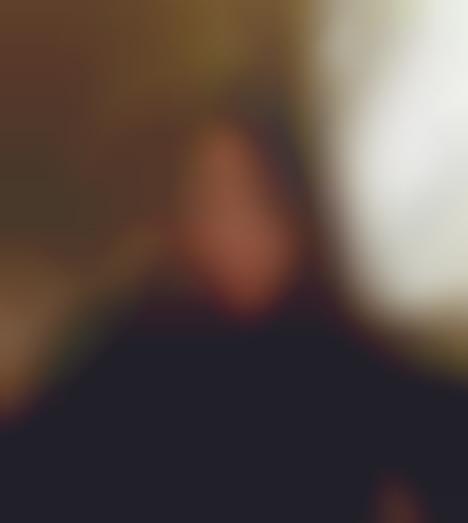Breaking Workplace Norms for Inspiration
Thais Ordine, Brand Manager at Darden for Olive Garden
Related Trend Reports
AI Thais Ordine works as a brand manager at Darden for Olive Garden, and she recently spoke to Trend Hunter about all the ways that she inspires and expresses creativity in her work.
Thais Ordine works as a brand manager at Darden for Olive Garden, and she recently spoke to Trend Hunter about all the ways that she inspires and expresses creativity in her work. How does your team generate great ideas?
We have a couple of approaches, there's a formal way where a couple times a year we block time on people's calendars and go through a full ideation and brainstorming process where we use a lot of design thinking techniques. There is also an ongoing informal process where we ideate on day-to-day business challenges on our own. We're a really tight group and work really well together. We enjoy getting into a room and using design thinking techniques we've learned over the past few years to find new solutions.
For the formal processes we use outside help, the informal ones either I lead or one of the other Brand Managers does. We have a beautiful office so we get into a room overlooking the lake and the palm trees and get to work – we do that a lot. We love coloring outside the box, we're all young and hungry.
What are some barriers to innovation?
I think we have some of the same ones other companies do: technology, time (to innovate and implement) and budget. Sometimes our industry is not at the cusp of leading-edge technology like tech companies, and with the size of our brand, implementing something completely new can take a few months or even years. So we definitely take that into account when we're innovating, how far we want to push and our timelines.
Another interesting thing is that our consumer base is very broad, so everything that we do has to be appealing enough for a lot of people to love it. Because we play at the national level and cater to a broad base, some of the leading trends might be too niche when they first takeoff. We can’t just incorporate trends for "trends' sake", we have to be more methodical and think about it. Sometimes we do get enthralled with a new idea, but we all have to kind of bring ourselves down a little bit.
How do you identify trends?
We're all curious here and we make up a very diverse team. We all have different backgrounds – some of us are passionate about music, have a background in trends, agency, retail or even CPG. This diversity helps us immensely, that's definitely one thing that we have going for us.
We read all kinds of news, some of us love politics, others economy, food services, and tech – we're always reading. We obviously track all of our competitors and read a lot of the trade magazines, but we also follow fashion and hospitality. We get a lot of newsletters or we follow blogs about innovation. I have friends who are trend experts and futurists so I stay in touch with them, and I do have close ties with people from previous companies I worked for in banking and retail. It all adds up.
In addition to all that, I personally have this crazy magnetic board at home, and every time I see something that might be the spark of a new trend or idea, I pin it.
Do you have specific rituals for resetting to be creative?
I love getting out of the office, that's a big one. I think over the past 10 years the cell phone (and connectivity) has become my biggest enemy, probably everyone else’s too. It's great when we can literally turn off the phone and get out of the office, that's why we do the formal brainstorming ideations outside the office.
I'm visual, so I draw a lot from blank pages and I jot things down, my brain is just wired that way. For a lot of people, coming across a blank piece of paper is intimidating – I love it, because that's how I clear my head. I usually do it alone and then I eventually feel the need to talk to people about new ideas. One of the benefits of being in Florida is the beach, being on the sand clears my mind, makes me think differently.
Has there ever been an instance where another industry has influenced an innovation at your company?
That's something I brought with me from a company I was at before, I think that's one thing that I love about innovation. We're always looking at adjacent industries. The tech and fashion fields are usually ahead in trends and consumer behavior – they help us think differently.
We always have to tweak what we see in other industries to suit our needs, but it would be naïve to disregard other industries where our consumers are also shopping or interacting with. We definitely look at what's going on in other categories and use that as inspiration.
What's the most unconventional thing you have done to get creative inspiration?
I've done different things in the past. I've done a lot of Human Libraries (when you bring in somebody that's not in your industry). So instead of bringing in a chef to an ideation session, for instance, we could interview a funeral home director. It might sound crazy since we are in the food service business, but a funeral home director deals with hospitality to a certain extent and manages people going through a tough time in their lives – we can learn from that.
I’ve also done things in past jobs where we've gone out with one thing in mind. For example, we want to know how to do the next shopping window for our company for a specific season, so we would go around the country just looking and getting inspired by what people put on display during that season.
The other thing we love to do and we do a lot here is “break” an idea or established way of thinking by using exercises like "what would you do that would get you fired?” or “what’s the worst thing you could do?". We basically list out the answers based on the problem, then force ourselves to turn that answer around – this exercise always gets us thinking outside the box. Those are some of the techniques that we use to get into a thinking space, just to break the mold.
References: olivegarden
Featured Articles

Sparking Tastes and Trends
Kelli Heinz, Director of Marketing at Bell Flavors & Fragrances

Embracing the Future While Honoring the Past
Lisa Ingram, President and CEO at White Castle

From Risk to Reward
Alexandre Bastos, Global Director of Innovation at Givaudan

Diving Deep in Innovation
Ciara Dilley, Senior Director of Global Snacks Innovation at PepsiCo

A Multiplicity of Connections
Scott Ostrowski, Chief Technologist at Booz Allen Hamilton

The Energy to Innovate
Elaine Robinson, Innovation Programme Manager at Electric Ireland

Opportunities and Disconnects in Innovation
Jack Elkins, Director of Innovation at Orlando Magic

Creating Connected Experiences
Nancy Hutson, Corporate VP of Events & Entertainment at SeaWorld

Diversifying Experiences for Creative Inspiration
VP of Innovation at Hunter Fan, Michael Graber